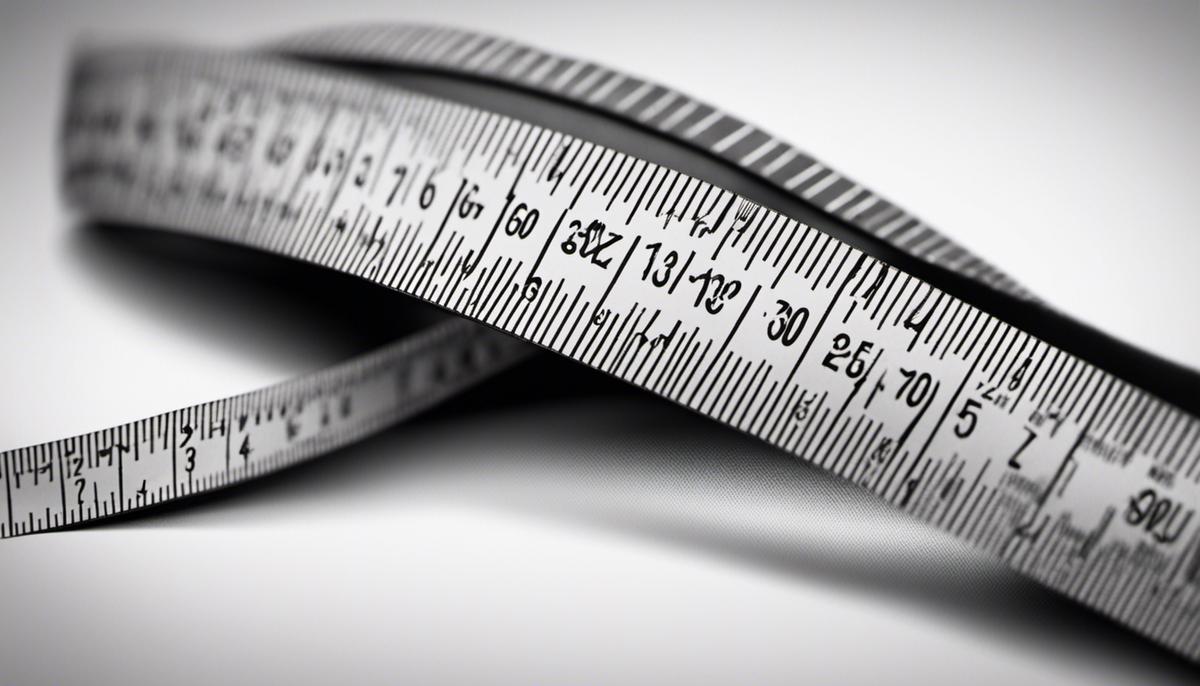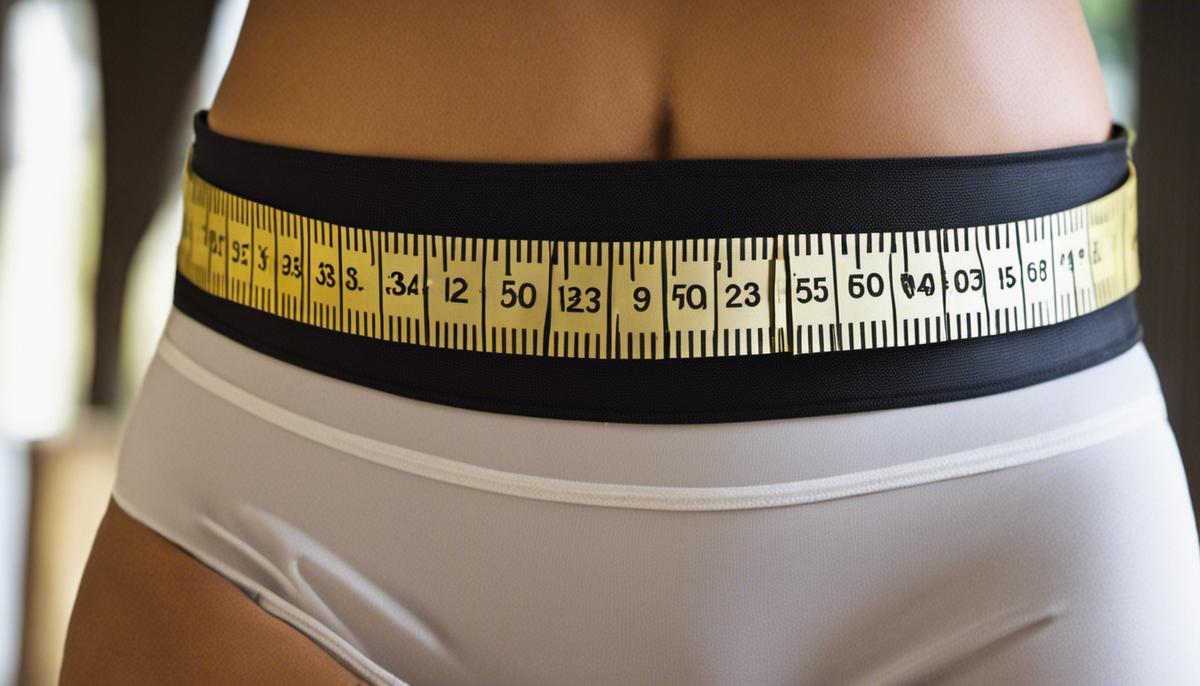Many people focus solely on the weight they see on the scale as an indicator of their physical health. However, a critical component often overlooked is ‘girth measurements’. Girth measurements form an integral part of understanding an individual’s overall health, body composition, and fitness levels. Unfortunately, several common errors can occur during girth measurement, leading to inaccuracies, but with the right technique and awareness of these issues, one can ensure consistent and accurate results. Beyond simply taking consistent girth measurements, one should also understand the role of lifestyle factors that influence body girth and learn to make use of these measurements to gauge overall health and fitness effectively.
Understanding Girth Measurements
Understanding Girth Measurements
Girth measurements refer to the measure of the circumference of different parts of the body. The value of these measurements is commonly overlooked, but they are critically essential in the fields of health and fitness. Girth measurements are often used to display changes in body size over time, indicating growth or regression. They help in determining body fat distribution, which can reveal potential cardiovascular risks, such as visceral fat in the abdominal area causing higher risks of heart disease.
As well as being an integral part of body composition analysis, girth measurements help in tracking weight loss programs’ progress. They are a more effective method of witnessing hard-earned results than relying solely on the scale, as muscle is denser than fat. Hence, an individual might be losing fat and gaining muscle, but not witnessing drastic changes in weight.
Standard Methods for Body Measurements
Knowing how to correctly take girth measurements is key for accurate tracking and assessment. The four most common points of measurements are the waist, hips, thighs, and arms. Measurements should be taken with a flexible but non-stretchable tape measure for high precision.
For consistent waist measurement, the measuring tape must level with the navel and all the way around the body. As for hip measurements, the tape should be wrapped around the body at the widest part of the buttocks. Thigh measurement differs from person to person based on personal preference, either at the highest part of the leg or midway between the hip and the knee. Finally, the arm’s link is measured by wrapping the tape around the largest part of the upper arm, from shoulder to elbow.
Strategies for Enhancing Girth Measurements
If one aims to improve girth measurements, it’s fundamentally about reducing excessive body fat in distinct areas. This endeavor can be achieved by integrating consistent exercise and a nutritious diet regularly.
Including a mix of cardiovascular activities for comprehensive fat loss and resistance training to develop lean muscle mass is commonly advised. These measures aid in increasing metabolism which often accelerates further fat removal. Specific workout routines tailored for your personal needs can be developed with professional advice from fitness trainers or physiotherapists.
Diet, a vital component to this journey, should be balanced with quality proteins, fresh fruits, vegetables, and whole grains while limiting processed meals, sugars, and unhealthy fats. People often try to focus fat loss on specific body parts, but it is important to debunk this myth of spot reduction.
Enlisting the services of certified dieticians or nutritionists can offer personalized, tailored food plans. These are developed based on your unique needs and existing health conditions. It’s encouraged to implement consistent, healthy habits which will provide a long-term impact on girth measurements. Recording these measurements regularly aids in monitoring your progress and amending routines or meal plans as needed.
Remember, achieving your goal requires a balanced approach. Factors such as stress levels, quality of sleep, and overall lifestyle choices can significantly impact your body’s responses to exercise and dietary habits.

Common Issues with Girth Measurements
Potential Pitfalls in Girth Measurements: Recognizing Common Errors
Girth measurements are frequently used in the health and fitness industries to monitor alterations in body size and assess the success of exercise or dietary plans. However, a range of inherent errors and omissions can lead to inaccurate readings.
An important issue lies in the placement or tautness of the tape measure during measurement. When measuring body girth, it is crucial that the tape is parallel to the ground and fitted snugly against the skin, but not so much as to compress underlying tissues. In practical scenarios, placement and tension are often inconsistent; the tape might be too loose or overly tight. Each of these circumstances can significantly skew the accuracy of the measurements.
Flexing and Its Influence on Girth Measurements
Another common problem arises when the individual whose girth is being measured intentionally or unintentionally flexes their muscles during the process. Flexing can significantly adjust the girth measurement by artificially inflating muscle size. As a result, the measurement becomes unreliable and does not provide an accurate representation of the person’s actual body girth.
Inconsistent Measurement Locations and Impacts on Girth Accuracy
Finally, inconsistent measurement locations can lead to discrepancies in girth measurements. It’s crucial to consistently measure the same spot each time to ensure reliability. For example, when measuring the arm’s girth, the specific point on the arm (for instance, the bicep’s fullest part) should be marked and consistently measured each time. If the location varies even slightly, it can lead to considerable inaccuracies in the recorded girth measurements.
Practical Measures for Improving Girth Measurements
To optimize the accuracy of one’s girth measurements, several essential measures can be taken into account. The first step is to use a flexible tape measure that doesn’t stretch, keeping it perpendicular to the body part or limb in question. The tape measure should be snug against the skin, but not excessively tight that it could potentially dig into it or compress the underlying tissue. This ensures a suitable balance between accuracy and comfort.
When taking the measurements, it’s crucial that the person being measured is completely relaxed, their muscles not flexed. To achieve this, they may be instructed to breathe normally and to keep a neutral position. This helps to prevent any potential distortions caused by muscular flexion.
Lastly, the consistency of the measurement’s location plays a significant role in obtaining reliable girth measurements. An effective method for maintaining consistency is marking the exact measurement spot and using that same point for subsequent measurements. Despite their simplicity, implementing these steps can greatly enhance the precision of girth measurements, contributing towards the effectiveness of fitness or diet programs.

How to Improve Girth Measurement Techniques
Selecting the Appropriate Device for Girth Measurements
The type of device utilized for girth measurements can greatly influence the precision of the results. Soft, flexible measuring tapes are the most commonly used instruments due to the ease of their application on various body parts and their ability to conform to various body outlines. A tailor’s tape measure, which is adept at capturing measurements on curved or irregular surfaces, is a particularly suitable choice for measuring the girth of areas such as the waist, hips, thighs, or biceps.
On the other hand, for more rigid body parts, calipers may be used as they allow for more structured measurement, although they require more skill to handle accurately. By choosing the correct measuring device, you can further improve the accuracy of your girth measurements, bringing you closer to your fitness or diet goals.
Positioning for Accurate Girth Measurements
Positioning is a significant factor when taking accurate girth measurements. Depending on which part of the body you’re measuring, the positioning can vary. For waist measurements, stand tall with your feet shoulder-width apart and breathe normally. Have the tape measure circle your waist from the widest part, usually the navel.
When measuring the hips or thighs, stand with your feet together. For the hip, wrap the tape measure around the widest part of your hip bones. For the thigh, take the measurement at the highest part of your inner thigh. Ensure the measuring tape is level and snug, but not overly tight that it could squeeze the skin.
For bicep measurements, relax your arm and let it hang naturally by your side. Then, wrap the measuring tape around the largest part of your upper arm.
Strategies for Consistency
Taking consistent measurements is equally as important as obtaining an accurate reading. The key to consistency lies in the process. Want to ensure reliability while measuring girth? It’s crucial to use the same measuring device, use the same tension each time the measurement is taken, and measure at the same location each time.
Check your measurement two or three times in a row to make sure you’re getting the same number each time. Moreover, taking measurements at the same time of day, like after waking up or before going to bed, can help reduce potential differences due to body fluctuations throughout the day.
A Simple Guide to Accurately Measuring Your Girth
- Decide on the suitable measuring instrument; a flexible measuring tape often works best.
- Align your posture appropriately: stand upright and at ease.
- Pick the part of your body you wish to measure and locate the broadest spot.
- Position the measuring tape around the selected point, making sure it remains level and relatively tight.
- Document the measurement, taking care not to tighten or loosen the tape excessively.
- Perform the procedure two to three times to confirm the consistency of your results.

The Role of Lifestyle in Girth Measurement
A Closer Look at Girth Measurements
Girth measurement, often referred to as “circumference,” entails quantifying the roundness or thickness of various body parts, such as around your waist or hips. These measurements serve as key parameters in body composition analysis, used to assess existing health conditions and predict potential health risks.
The Impact of Lifestyle on Girth Measurements
Lifestyle factors, particularly diet and physical activity, significantly affect a person’s girth measurements. Unhealthy eating habits, coupled with sedentary activities, may result in increased body fat, which can affect girth measurements. Consuming high-calorie foods, saturated fats, and processed foods leads to weight gain and an increase in body girth. Lack of physical activity also adds to undesirable girth measurements due to an imbalance between calorie intake and calorie burn.
Chronic stress, too, has an effect on girth measurements. The body’s response to stress is the release of cortisol, a hormone contributed to increased appetite and fat storage. High cortisol levels can specifically lead to more fat deposition around the abdomen, increasing waist girth.
Adopting Healthy Diets For Desirable Girth Measurements
A balanced diet plays a crucial role in decreasing waist and hip circumference. Consuming meals rich in proteins, whole grains, fruits, vegetables, and healthy fats offer essential nutrients needed to maintain an ideal body weight. Portion control can also curtail excessive calorie intake, preventing weight gain and undesirable girth measurements.
Regular Exercise For Girth Management
Engaging in regular exercise helps maintain healthy girth measurements, as physical activities burn calories and reduce body fat. Incorporating both cardiovascular exercises like running, jogging, cycling, swimming, and strength training exercises helps improve body composition. Experts recommend at least 150 minutes of moderate-intensity or 75 minutes of intense exercise every week.
In addition, exercises specifically targeted at improving waist and hip girth such as core strengthening exercises, Pilates, and yoga have proven beneficial. These exercises not only decrease waist circumference but also increase muscle mass, leading to a leaner body.
Lifestyle Modifications For Improved Girth Measurements
In addition to diet and exercise, other lifestyle modifications play a meaningful role in girth measurements. Adequate sleep is linked to maintaining healthy body weight and reducing stress, which can influence cortisol levels and waist girth. Hydration is crucial in optimal metabolism, aiding digestion, and maintaining satiety, ultimately helping maintain desirable body girth.
Similarly, mindfulness practices like meditation, art therapy, and mind-body exercises can help manage and reduce stress levels, potentially helping curb weight gain and enlarged body girth.
Last but not least, quitting unhealthy habits like smoking and excessive alcohol intake also contribute to waist girth reduction because such habits can contribute to an unhealthy increase in body fat, including abdominal fat.
To cultivate improved girth measurements, one needs to diligently observe and manage key lifestyle habits. Holistically modifying your lifestyle is pivotal in maintaining your health and achieving an optimal body composition. It is essential to remember that systematic health check-ups coupled with expert guidance not only provide an accurate understanding of your health status but can also help in developing a personalized and effective health management plan.

Making Use of Girth Measurements
Understanding the Implications of Girth Measurements
Girth measurements, typically collected at specific points such as the waist, hips, or thighs using a flexible, non-stretchable tape measure, serve as a beneficial technique in evaluating an individual’s body composition. These measurements primarily scrutinize the distribution of body fat, shedding light on the individual’s overall health condition.
A raised waist girth often points towards an abundance of abdominal fat which is usually linked with heightened risk of health complications like heart disease and type 2 diabetes. On the other hand, a reduced waist girth is frequently associated with lower risk of such problems.
In the same vein, the hip girth measurement can aid in understanding fat distribution. A high waist-to-hip ratio, wherein the waist girth equals or exceeds the hip girth, can also denote a substantial health risk.
Improving Girth Measurements Over Time
Tracking girth measurements over time can contribute considerably to fitness and health improvement goals. Regular monitoring can provide tangible evidence of changes in body composition, especially when combined with a consistent diet and exercise program.
Incremental changes in girth measurements are expected when starting a new fitness or dietary regimen. For instance, an increase in muscle mass might lead to an initial increase in certain girth measurements. However, over time, fat loss usually results in an overall reduction in these measurements. It’s essential to interpret these changes within the broader context of overall health and fitness improvements.
Girth Measurements and Body Fat Assessments
Body fat assessments often use girth measurements along with other methods like skinfold measurements and bioelectrical impedance. While these other methods might offer a more comprehensive overview of body fat distribution, they may also require specialized equipment or trained professionals. Girth measurements, on the other hand, are simple, inexpensive, and can be performed by the individual in a home setting.
However, girth measurements alone should not be relied upon solely for a complete picture of health. They are most beneficial when used in conjunction with additional measurements such as body mass index (BMI) or body fat percentage.
Girth Measurements’ Role in Overall Health and Fitness
The utility of girth measurements extends beyond tracking physical changes. They act as useful benchmarks for overall health and fitness, as they can indicate the risk level of cardiovascular diseases and metabolic syndromes. For example, research shows that men with a waist girth above 40 inches and women with a waist girth above 35 inches are at significantly higher risk for heart disease and type 2 diabetes.
In conclusion, girth measurements are an accessible, cost-effective method of tracking body composition, indicating potential health risks, and evaluating the effectiveness of a personal fitness or diet program over time.

Ultimately, improving and understanding girth measurements is about more than just numbers on the tape measure. It’s about fostering a comprehensive view of health and body composition that includes not just the size of the body, but the quality of life as well. Lifestyle changes that integrate healthy eating and regular exercise can have substantial impacts on girth measurements, painting a more accurate picture of overall health than weight alone could ever provide. By learning to measure accurately, understanding the implications of the readings, and using the knowledge to inform lifestyle choices, girth measurements can become a valuable tool in maintaining and improving overall health and wellbeing.
